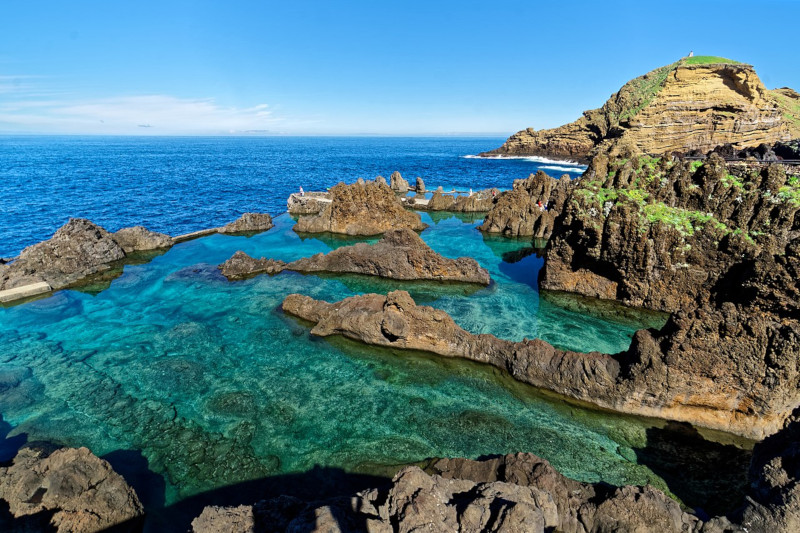
Madeira Facts
- Perhaps most notably, the term Madeira serves as the name of both a breathtakingly beautiful island and archipelago with a unique distinction. That’s because it lies near one continent, but forms part of a country on an entirely different continent.
- This has the effect of making this marvel of geology an autonomous region of that country. That isn’t its only claime to fame, however. That’s due to the fact that the magnificent location also holds a special distinction in several historical terms.
- For starters, it’s believed to be the location mentioned by the Greek philosopher Plutarch, in 75 AD. Recent, and still ongoing, archaeological evidence also indicates that ancient Vikings visited the site, perhaps several times, between 900 and 1030 AD.
- In more recent times, Europeans first discovered the visually stunning Madeira in the year 1418. That holds true for the entire archipelago. This occurred when two ship captains in service to Prince Henry the Navigator were blown off course during a storm.
- Subsequently, the understandble influx of people quickly began to arrive. The first European settlers further arrived some time between the years 1420 and 1425. Currently, the magnificent site of Madeira constitutes an extremely popular tourist destination.
- In point of fact, more than 1.4 million visitors journey to the archipelago every year. That represents a staggering number. Due to its extraordinary beauty, though, portions of the archipelago also now hold the designation of a UNESCO World Heritage Site.
Related Articles
Madeira Physical Description
The sincerely breathtakingly beautiful site named Madeira is renowned for its natural beauty. This aspect of it quickly catches the eye of those lucky enough to journey to the site. In fact, it quite easily holds its own when compared to the rest of the formation.
That’s because, in itself, it forms the largest island of the awesome archipelago bearing the same name. That alone makes it worthy of note. This truly magnificent marvel of Nature also possesses a total geographical area measuring approximately 286 sq mi (740.7 sq km).
This single, visually magnficent, island actually comprises more than 75% of the total area of the entire amazing archipelago. Given the geographical location of this marvelous work of Nature, though, the origins of the archipelago should come as no great surprise.
That’s due to an amazing fact underlying the basic nature of this gorgeous product of time and powerful geological forces. This holds true due to the fact that the remarkable island actually represents the uppermost portion of an ancient shield volcano.
The massive formation of Madeira itself further boasts a stunning measurement. To be precise, it rises a phenomenal total of 3.7 mi (6 km) from the floor of the surrounding ocean. The volcano, and therefore the island, further formed about 5 million years ago.
Madeira Location, Geography, and Ecology
The gorgeous island named Madeira, along with the archipelago sharing the same name, formed in the area known as Macaronesia. This term applies to a loose grouping of four separate archipelagos located in the northern portion of the Atlantic Ocean.
More specifically, however, it lies off the coasts of both Europe and Africa. Officially, it forms part of the Portuguese Republic. There, this incredible site has amazing geographical features. The island itself also boasts an impressive 90 mi (150 km) of coastline.
Intriguingly, it also has a mountain range that runs through the center of the island. The highest point of this impressive range measures 6,109 ft (1,862 m). The beauty remains best known for its array of mind-boggling valleys, ravines, and coral reefs, and sea caves.
The magnificent Madeira also has a remarkably complex climate. That’s because, in fact, it has several microclimates, due to the variations in altitude. The only native fauna consists of a species of bat. Numerous animal species, however, have been introduced.
Yet its world-renowned natural beauty doesn’t merely end there, though. That holds true due to the fact that multiple plant species also appear on the island. These naturally occurring flora mainly consist of a moderately wide variety of ferns, cacti, vines, and shrubs.
Features Sharing Its Region
Check out our other articles on 7 Highly Unusual Lakes, Basking Shark, Pearl Shoal Waterfall, Chatham Island forget-me-not, Chilean Dolphin, Saint Francis’ Satyr Butterfly, Puffin
